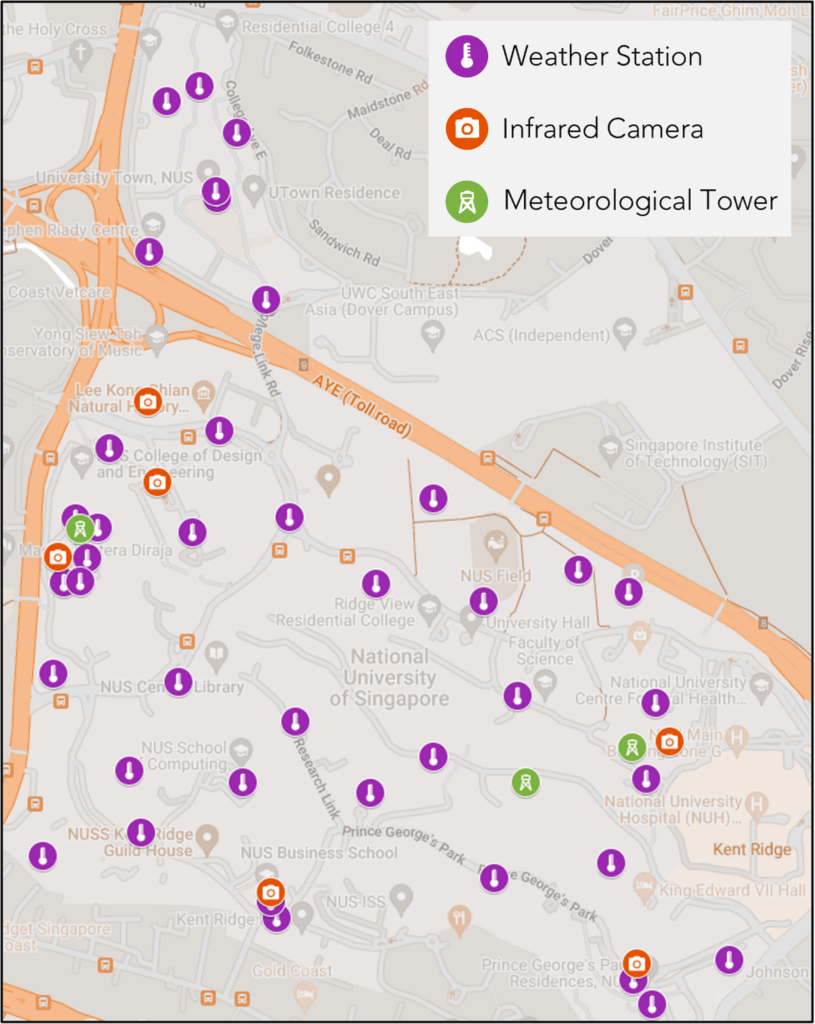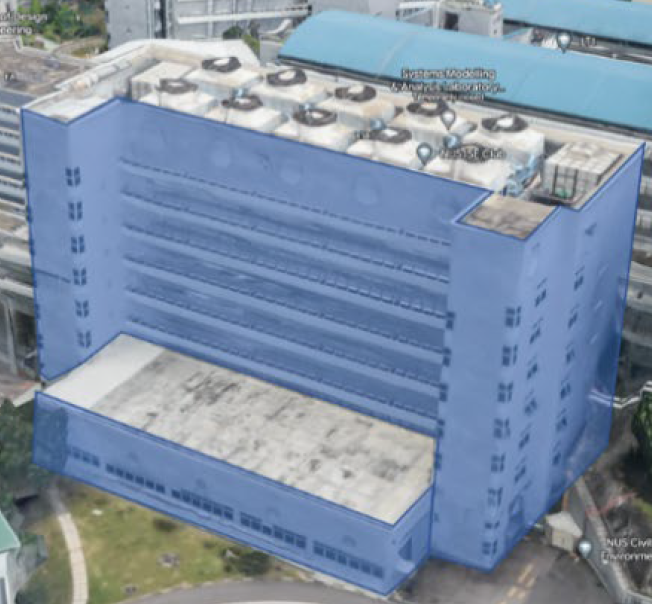COOL NUS
Making the campus climate-resilient through comprehensive sensing technologies and applying mitigation modeling and infrastructural measures to improve outdoor thermal comfort.
Our Approach
NUS is the first campus in Singapore to address climate resilience. A collaboration between the University Campus Infrastructure (UCI) & researchers from the College of Design and Engineering (CDE), the project uses a “BEAM” approach - Baselining, Evaluating, Action, Monitoring.

An extensive network of over 50 campus-wide sensors, the densest sensor network for a campus in Singapore, will collect high-resolution environmental data to establish the baseline micro-climate conditions. The baseline will be refined and established by FY24. This will be used to identify hot and cool spots, and mitigation measures will be simulated and testbedded by FY25.

Progress Highlights
FY22
- In process of establishing campus baseline Outdoor Thermal Comfort Index (OTCI) by FY24

Cool paint will be tested on the façade of E1A (shaded in blue), a west-facing building which receives direct sunlight in the afternoon and evening.
Testing Cool Paint for Mitigation
We are testing the effectiveness of cool paint as a mitigation measure. This will be applied to E1A building façade and selected pavements, which are key sources of anthropogenic heat. The results will be evaluated by end 2024 and scaled up campus-wide if shown to be effective.

